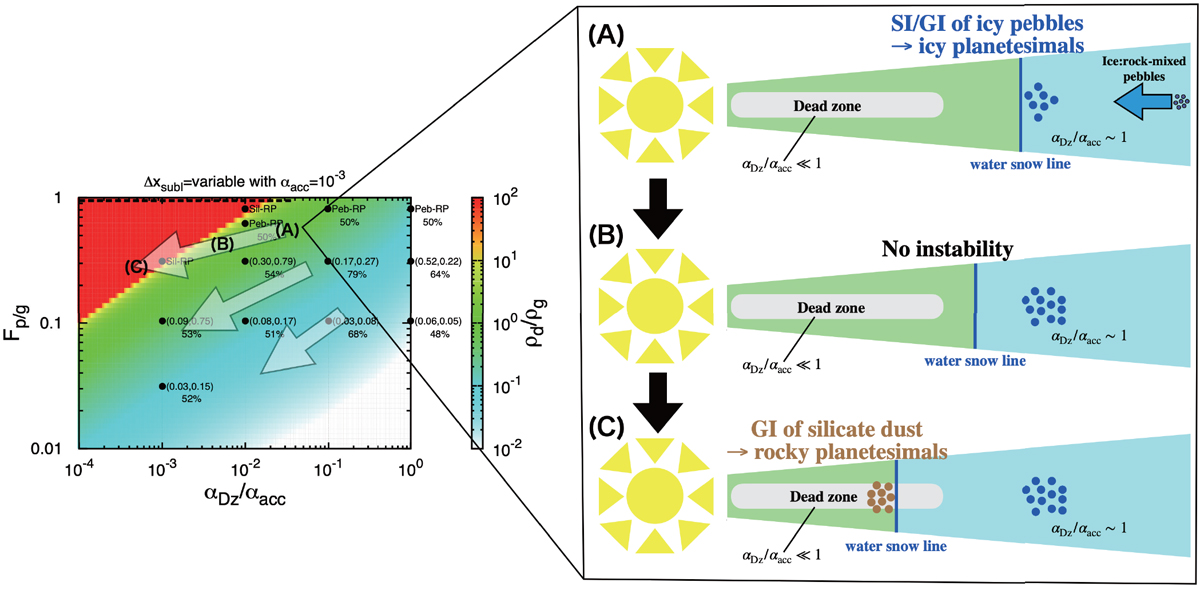Fig. 6

Illustration showing a possible planet formation scenario. Here we envision a disk containing an MRI-inactive dead zone near the midplane (αDr(= αDz)∕αacc ≪ 1), while the outer disk is active (αDr(= αDz)∕αacc ~ 1). We also envision an initially high Fp/g value that becomes smaller with time, while the snow line moves inward. Our results of planetesimal formation around the snow line imply that the icy pebble pile-up (i.e., icy planetesimals formation by GI and/or SI; panel A) would be favored in the outer region (αDz ∕αacc ~ 1) in the early stage of the evolution, while the formation of rocky planetesimals by GI of silicate dust would be favored in the later stage when the snow line has reached the dead zone (αDz ∕αacc ≪ 1; panel C). In the intermediate phase (αDz∕αacc < 1 but not αDz∕αacc ≪ 1) and Fp/g < 0.6, SI/GI of pebbles and GI of silicate dust would not be expected to occur (panel B). A diversity of evolutionary paths for protoplanetary disks would produce a diversity of planetary systems.
Current usage metrics show cumulative count of Article Views (full-text article views including HTML views, PDF and ePub downloads, according to the available data) and Abstracts Views on Vision4Press platform.
Data correspond to usage on the plateform after 2015. The current usage metrics is available 48-96 hours after online publication and is updated daily on week days.
Initial download of the metrics may take a while.


